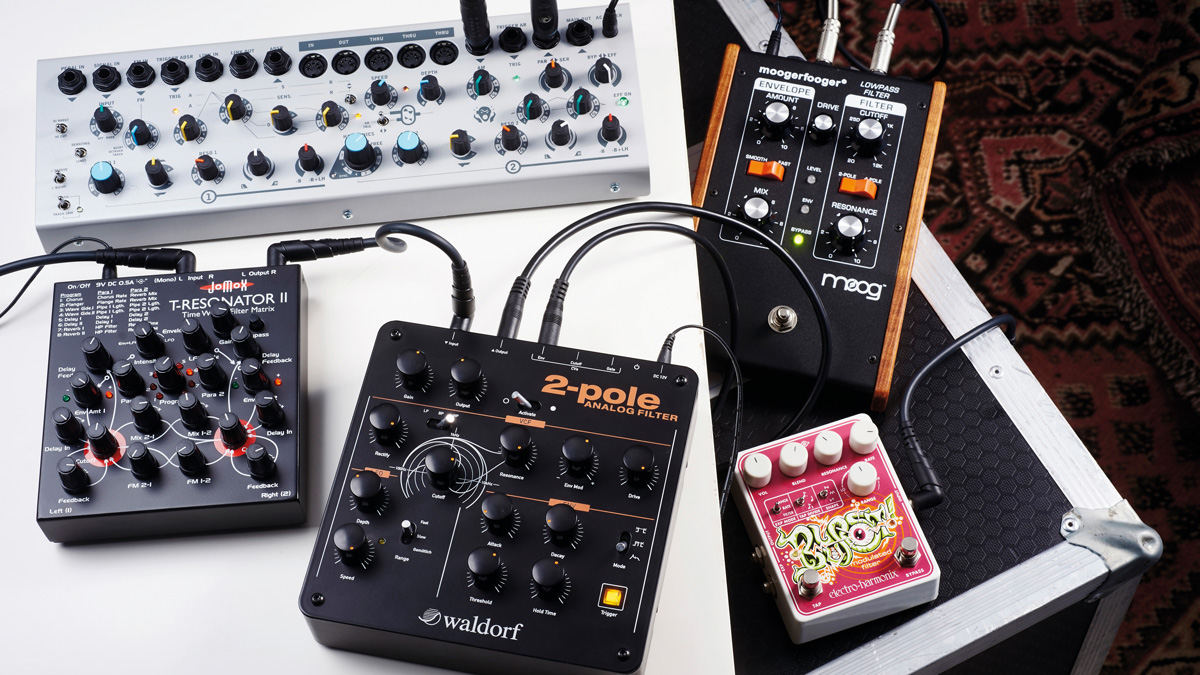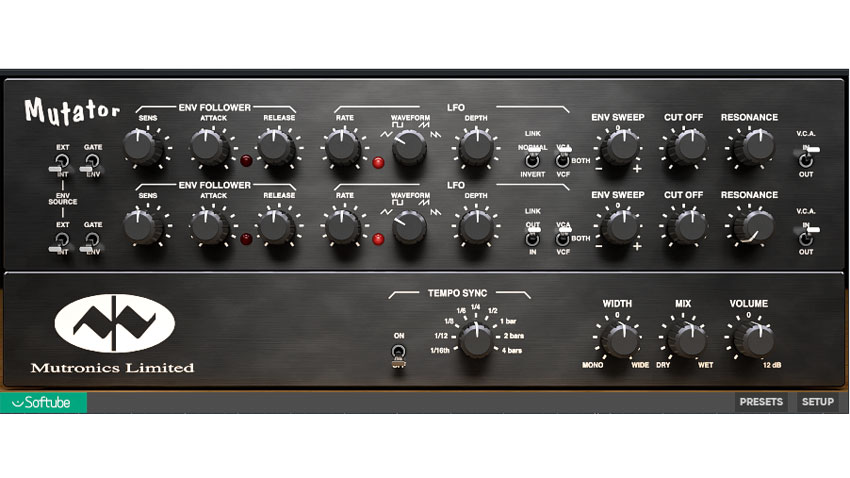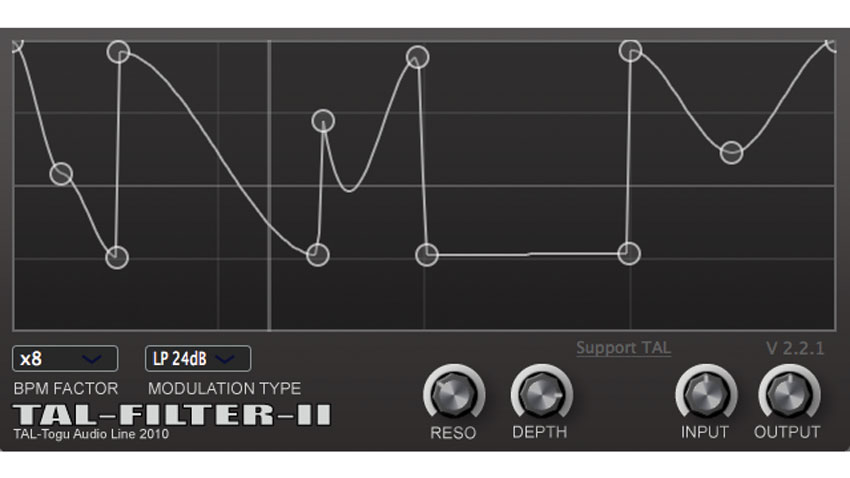A brief history of filters (plus 3 of the finest filter plugins)
This staple mixing and production effect is extremely well represented in both hardware and software. Here's its story…

Filters are among the oldest electronic audio effects, dating back to the earliest days of telephony. A staple of radio production in the early 20th century, primitive filters usually offered only a couple of ‘tone’ controls, each with a fixed frequency (bass or treble) and predetermined levels of gain control.
If this description smacks of the equaliser on your granddad’s old hi-fi, that’s because it's the same thi. Hi-fi EQs use filters dedicated to specific frequency ranges. Early studios were more likely to have EQs in their racks than what we’d recognise as a filter effect with a single cutoff and resonance control. Yet the goal was the same: to take control over specific frequencies in the signal path.
A few equalisers made a splash over the years, but none so much as the Pulse Techniques EQP-1a and its various siblings, a device with the peculiar ability to simultaneously boost and cut at the same frequency. Different curves for boost and cut allow it to, for example, boost the area around the cutoff frequency, while simultaneously notching the area just above it. A favourite trick for kick drums when applied to the 60Hz range, this technique can add heft to the low end without muddying the signal.
None shall pass
While early equalisers had much in common with the dedicated filter effects of today, it was Robert Moog’s 904a filter module that had the most influence over modern designs.
Designed for Moog’s modular synthesiser systems, the 904a is a low-pass resonant filter that allows control over cutoff and resonance, either manually or by means of incoming voltages. A ‘4-pole’ design with a steep rolloff, it could be driven into self-oscillation by cranking up the resonance.
Before Moog (and his West Coast contemporary Donald Buchla), electronic musicians were forced to use signal generators and filters designed for the laboratory. Interesting work was done in this way (check out Bebe and Louis Barron’s soundtrack for Forbidden Planet), but the equipment was cumbersome and could not be ‘played’ like a traditional instrument. To create independent notes, musicians had to resort to cutting and splicing individual snippets of magnetic tape.
Electronic pioneers like Moog and Buchla changed all of that by introducing systems purpose-built for making music. Moog’s 1-volt-per-octave tuning standard and optional keyboard attracted performing musicians to the world of electronic music. Thanks to the success of his modular system and the later self-contained Minimoog, the Moog filter would become the standard by which all others would be judged.
Want all the hottest music and gear news, reviews, deals, features and more, direct to your inbox? Sign up here.
And there were indeed others. the UK’s EMS chose a very different filter design for their VCS3 synthesiser. Whereas Moog’s filter was based on then-cutting-edge transistor technology, EMS built theirs around diodes. The result was a less precise filter with a lively, squelchy character not entirely unlike that found on Roland’s TB-303 decades later.
Though these filters were included on synths, musicians like Pete Townshend of The Who discovered that they made great effects processors for external gear as well, and soon they were wrapped around all manner of guitars, organs, drums and even vocals.
By the mid-80s, Yamaha’s filter-less DX7 was all the rage, and analogue synths had fallen out of favour. It would be another decade before musicians and manufacturers rekindled their love of the analogue filter. The 1990s saw a few dedicated filters hit the shops, among them the wicked Mutronics Mutator in 1996 and the lauded Sherman Electronics Filterbank a year later. By the end of the 1990s, the airwaves were rife with filtered drums and loops.
Needless to say, today’s musician has a wealth of filters from which to choose, hard and soft. There can be few filters ever built that haven’t been recreated as a Eurorack module and/or a software plugin.
To read Computer Music’s full Vintage Effects feature, pick up the November 2018 edition.
Three choice filter plugins

Softube Mutronics Mutator
Meticulously modelled on the rare and coveted 90s classic, Softube’s Mutronics Mutator adds the usual modern niceties such as tempo sync and the potential for automation. The original stereo hardware was used and abused by Fatboy Slim, Radiohead and Daft Punk. Yeah, it’s pretty much the 1990s in a box!
Read full Softube Mutronics Mutator review

Togu Audio Line TAL-Filter-2
TAL make some of the best 80s emulations around, both free and paid-for, so you’d expect them to have this filter thing down, and they do – and then some. Initially released with a built-in envelope follower, TAL-Filter II adds in an exquisite graphical envelope designer that can be used to modulate one of seven filter types, volume or pan.
Doanload Togu Audio Line TAL-Filter-2 for free

Moog Filtatron
Moog have made waves with superb iOS apps such as Animoog and Model-15, but Filtatron was their first. As you’d expect, it models the famous 24dB/octave filter found on Moog products, past and present. You can route external signals through it, or use the included oscillator or samples. LFO and envelope modulation are possible, and there’s a built-in delay.


Computer Music magazine is the world’s best selling publication dedicated solely to making great music with your Mac or PC computer. Each issue it brings its lucky readers the best in cutting-edge tutorials, need-to-know, expert software reviews and even all the tools you actually need to make great music today, courtesy of our legendary CM Plugin Suite.
